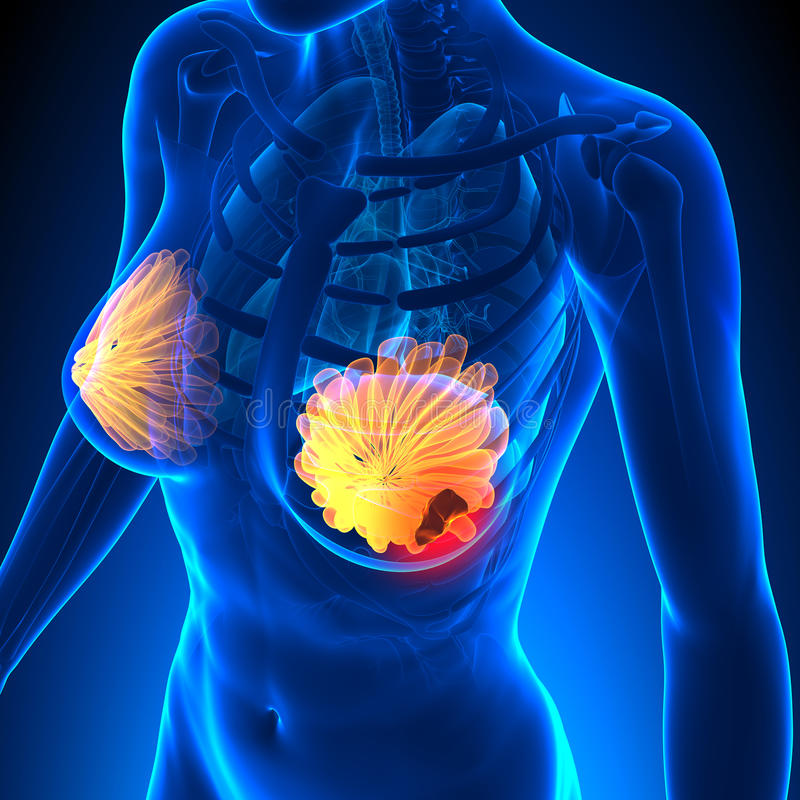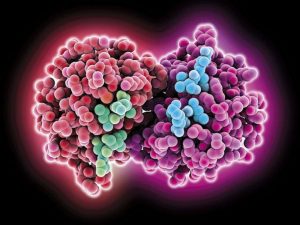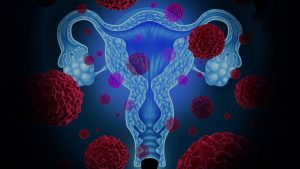Breast and ovarian cancer (genetic predisposition)

Breast and ovarian cancer. Genetic predisposition to oncological diseases of the mammary glands and ovaries.
Breast cancer (BC) is one of the most common cancers in the world. In Russia, this tumor occupies a leading position both in the structure of female oncological morbidity (20.9%) and in the structure of mortality from them (17%). Moreover, the increase in the standardized rate of breast cancer incidence in Russia over the past 10 years was 19.9%.
Currently, it is obvious that the causes and triggering mechanisms of breast cancer development are extremely diverse, and it is often extremely difficult to establish them. The only cause of breast cancer that we can currently determine with high certainty is genetic risk factors. Cases of detection of genetically determined breast cancer, according to the literature, are 5-10%. “Classic” types of hereditary breast cancer are associated with a high risk of ovarian cancer (OC); therefore, the term “BC / OC syndrome” is commonly used in the medical literature.
Hereditary BC / OC syndrome became the subject of intensive research in the early 1990s. In 1994, the first gene was discovered, the mutation in which is associated with this disease – BRCA1 (BReast CAncer 1), and a year later – the second gene, BRCA2. It was found that mutations in BRCA genes are inherited autosomally dominantly with incomplete penetrance. The prevalence of carriers of BRCA gene mutations in the general population ranges from 1: 800 to 1: 1000 people. Today it is believed that in 20-50% of cases hereditary breast cancer is caused by mutations in the BRCA1 and BRCA2 genes. The highest risk of developing these diseases is due to mutations in the BRCA1 gene, widely known thanks to the American actress Angelina Jolie.
According to the literature, the age peak of breast cancer detection in carriers of BRCA1 mutations falls on 35-39 years, in carriers of BRCA2 mutations 2 peaks are described: 43 and 54 years. By the age of 50, more than 50% of carriers of BRCA gene mutations already have developed breast cancer.
In the course of further research, it was possible to find new significant mutations leading to inactivation of the CHEK2, NBS1, PALB2, BLM, etc. genes.
Early diagnosis of breast cancer in women with abnormal BRCA genotype is an unsolved problem. Mammography is the gold standard for breast cancer screening in postmenopausal women. But in carriers of the BRCA1 mutation, the incidence occurs at a young age. Therefore, early detection of carriers of mutations in the genes of BC / OC syndrome is the main prevention of the development of breast cancer / OC.
Laboratory diagnostics
The MedLab laboratory analyzes the most common mutations in Russia that are highly likely to cause hereditary breast and ovarian cancer:
3 mutations in the BRCA1 gene (GE33) Breast cancer gene mutations BRCA1 (5382insC, 4153delA, 185delAG)
3 mutations in the CHEK2 gene (GE34) Mutation of the gene associated with breast cancer CHEK2 (1100delC), (GE146) Mutation of the gene associated with breast cancer CHEK2 (del5395), (GE147) Mutation of the gene associated with breast cancer CHEK2 (ivs2 + 1G /
1 mutation in the BRCA2 gene (GE144) Breast cancer gene mutation BRCA2 (6174delT)
1 mutation in the BLM gene (GE145) Mutation of the gene associated with breast cancer BLM (С1642T)
Tests for these mutations are collected in a single genetic profile GP7 Hereditary breast and ovarian cancer – 9m in 5 genes.
Genes for sporadic (spontaneous) cancer
In addition to the genes listed above, which are responsible for the development of hereditary forms of cancer, there are several more genes that control the influence of external factors on the woman’s body. With mutations in these genes, the risk of developing cancer also increases, especially against the background of smoking, increased insolation (UV radiation) and hormonal dysfunction.
As part of the study of the risk of developing breast cancer and ovarian cancer, the genetic profile of GP8 was created. Sporadic breast and ovarian cancer – 7 genes. It includes the 5 most common mutations that cause hereditary forms of cancer, as well as analysis for 5 genes that affect the hormonal background and the detoxification system.
Who is genetic testing indicated for?
All women who care about their health;
Those who have had at least 1 case of breast and / or ovarian cancer https://en.wikipedia.org/wiki/Ovarian_cancer in their family;
Daughters whose parents are carriers of mutations in the above genes.
To the attention of patients!
It is imperative to know that mutation detection is not a fatal sentence. On the contrary, the identification of mutations allows the doctor and the patient to take effective measures to prevent the development of the disease.
With a negative test result for mutations of the BRCA1 gene, in some cases, according to the testimony of an oncologist, it is possible to fully determine the sequence of this gene (sequencing).
If any mutations in the genes of hereditary cancer are found, it is mandatory to check for the presence of this mutation in the patient’s blood relatives.